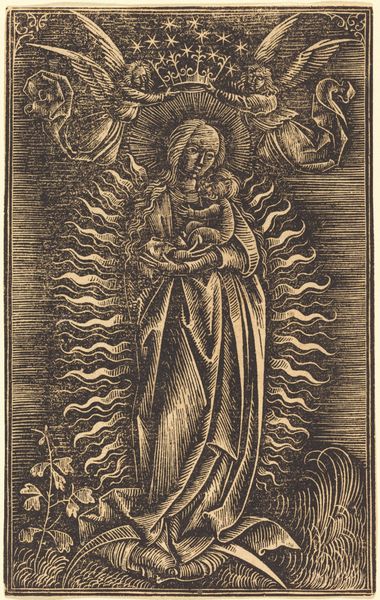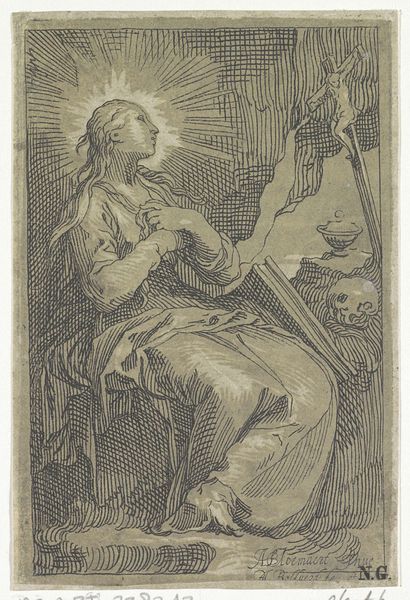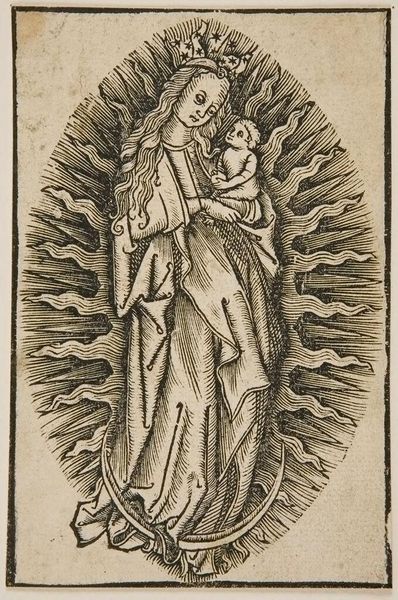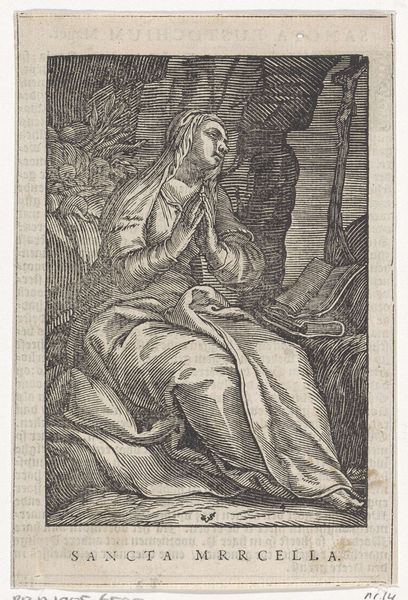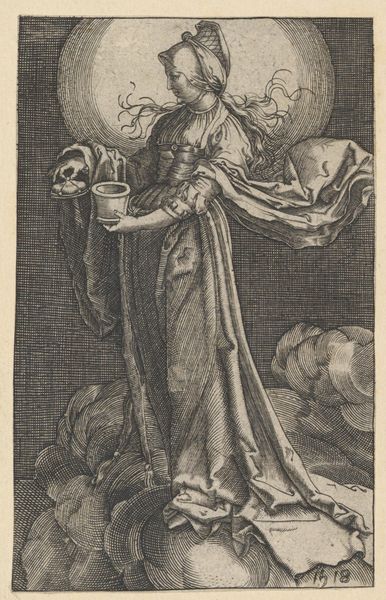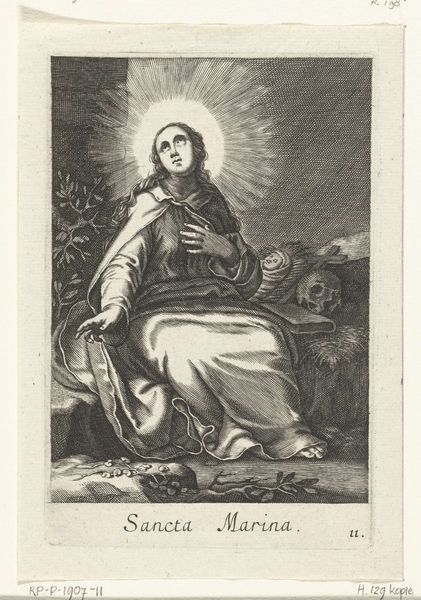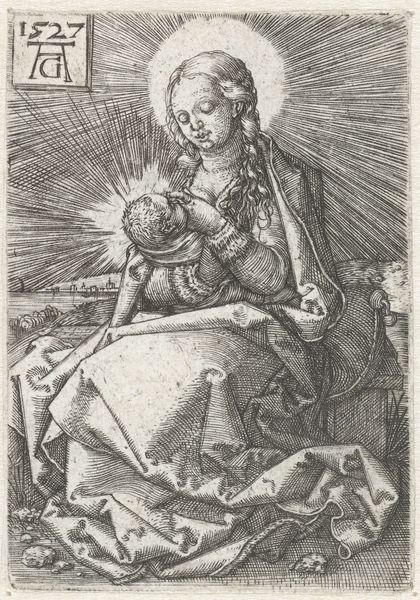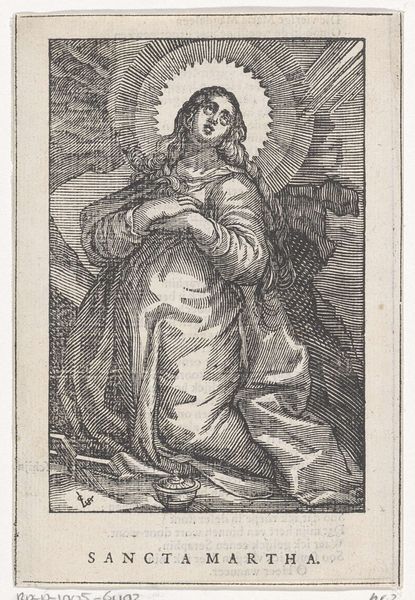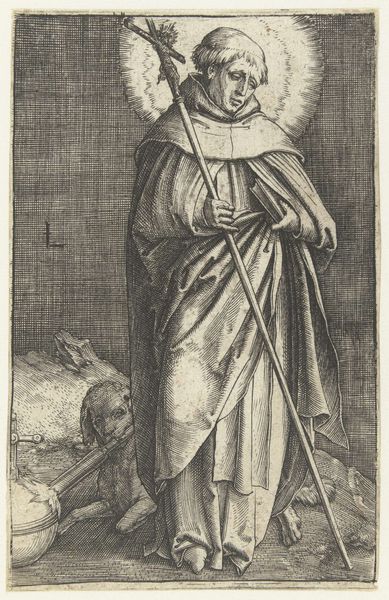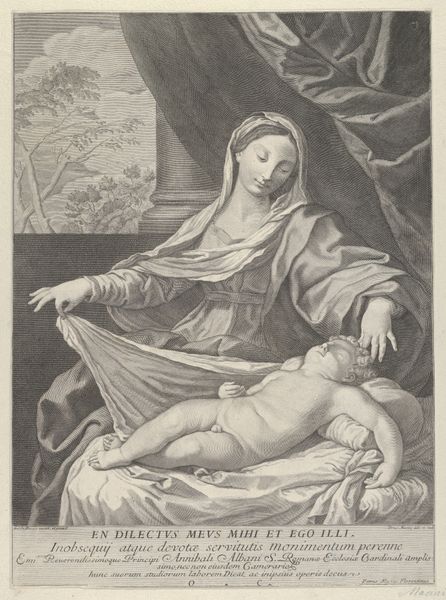
print, engraving
#
portrait
# print
#
figuration
#
line
#
history-painting
#
engraving
#
monochrome
Dimensions: height 74 mm, width 57 mm
Copyright: Rijks Museum: Open Domain
Editor: This is "Heilige met een roede, een kruis en een boek," or "Saint with a rod, a cross and a book" by Christoffel van Sichem II, made in 1648. It's an engraving, so a print. The strong linear quality almost overwhelms the subject matter, a melancholy saint holding her attributes. What do you see when you look at this work? Curator: I am immediately drawn to the artist's command of line. Note how Sichem employs hatching and cross-hatching to create tonal variation, lending volume to the figure and depth to the composition. Consider, too, the interplay between the solidity of the saint's form and the almost frenetic energy of the surrounding lines. The saint’s halo, almost casually rendered, seems at odds with the surrounding scene, wouldn’t you agree? Editor: I do see that now. The looseness of the halo is interesting given how controlled the rest seems to be. What’s the effect? Curator: It could suggest a separation, or even a tension, between the spiritual ideal, represented by the halo, and the physical, earthly representation of the saint. Look at the contrast: tightly controlled linework creating areas of intense shadow, offset by comparatively sparse, open areas. This technique results in a very powerful emotional impact. Do you see how the formal aspects contribute to an overall feeling? Editor: Absolutely. The dense lines definitely create a heavy, almost oppressive mood. The halo being so simple adds to that feeling of tension like she isn't part of this world or her identity as a holy figure is threatened somehow. I never would have thought to consider it in terms of formal structure, I have mostly been focusing on historical context these days. Curator: Precisely! Formal analysis invites this sort of close reading. These elements, when skillfully employed, create an image that transcends its representational function, engaging the viewer on a deeper, more visceral level. It is important to be well rounded and see different lenses with which to examine a piece of work. Editor: I learned so much from your analysis of light, shadow, line, and tone. Thanks!
Comments
No comments
Be the first to comment and join the conversation on the ultimate creative platform.
